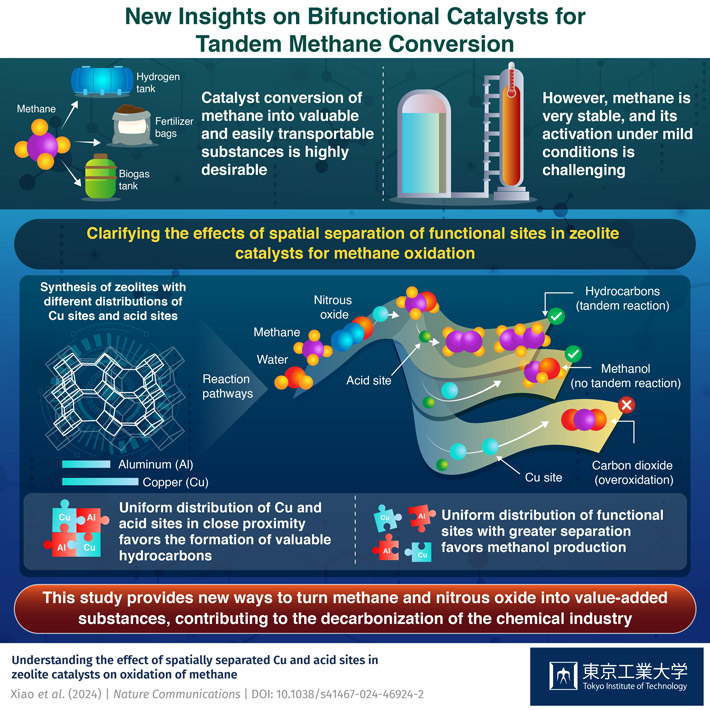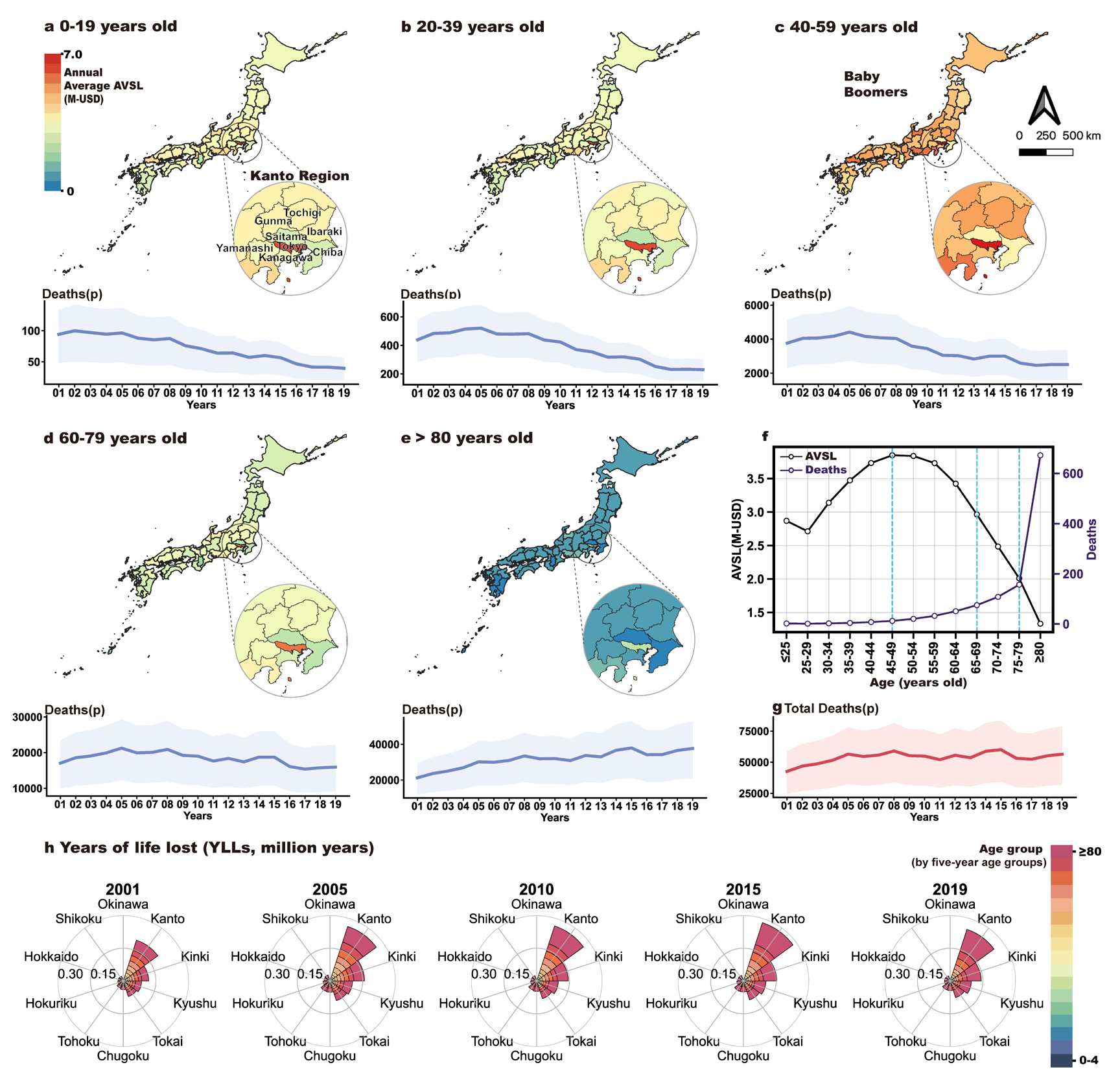The optimal design of a novel zeolite catalyst enables tandem reaction that turns greenhouse gases into value-added chemicals, report scientists at Tokyo Tech. By tuning the separation between different active sites on the catalyst, they achieved the continuous conversion of methane into methanol and then to hydrocarbons at mild conditions. These findings will help reduce energy costs and greenhouse gas emissions across various industrial fields.

Methane, a greenhouse gas that contributes significantly towards global warming, is also an important source of energy and an essential chemical resource. When used as a chemical feedstock, methane is typically converted into methanol first and then into hydrocarbons. However, this sequential conversion requires complex industrial setups. More importantly, since methane is a very stable molecule, its conversion into methanol requires tremendous amounts of energy when using conventional means, such as steam methane reforming.
Against this backdrop, the catalytic conversion of methane into methanol or other chemicals has attracted much attention from scientists, who are eager to find more energy-efficient and sustainable solutions. Among recently reported catalysts, copper (Cu)-containing zeolites have shown promise for methane-to-methanol conversion at mild conditions. Unfortunately, the yield and selectivity of most reported catalysts have been low, meaning that large quantities of undesirable byproducts are generated alongside methanol.
In a recent study published in on March 28, 2024, a research team including Associate Professor Toshiyuki Yokoi from Tokyo Institute of Technology, Japan, investigated a new type of bifunctional zeolite catalyst. Interestingly, this Cu-containing, aluminosilicate-based zeolite is capable of converting methane and nitrous oxide, another greenhouse gas, directly into valuable compounds through a series of intermediate reactions.
One of the key questions the researchers addressed was how the spatial distribution of different active sites in the catalyst affected the output of the reactions. To this end, they prepared multiple catalysts using not only different concentrations of Cu and acid sites (proton) in aqueous solutions but also different physical mixing techniques for solid samples.
Through various experimental and analytical techniques, the researchers found that the proximity between Cu and acid sites was crucial for determining the final products. More specifically, they reported that when Cu sites were near each other, the methanol produced in Cu sites from methane had a higher probability of being overoxidized by an adjacent Cu site, turning it into carbon dioxide. In contrast, when Cu sites and acid sites were close to each other, methanol was converted to valuable hydrocarbons in an adjacent acid site.
“We concluded that, for stable and efficient production of methanol and ultimately useful hydrocarbons from methane, it is necessary to uniformly distribute Cu sites and acid sites and have them be at an appropriate distance from each other,” explains Yokoi. “We also found that the distribution of products obtained is also influenced by the acid properties and pore structure of the zeolite catalyst.”
One of the most notable advantages of the proposed catalyst is its ability to sustain tandem reactions, that is, a simple process that merges multiple steps into one and gets rid of two different harmful greenhouse gases simultaneously. This property will be key to making such catalytic systems attractive in an industrial setting. “Our work will hopefully guide future efforts to achieve methane oxidation to methanol and open avenues for promoting hydrocarbon synthesis using methanol as an intermediate,” concludes Yokoi.
With any luck, this study will serve as a stepping stone toward the decarbonization of the chemical industry, contributing to the realization of a carbon-neutral society.
Reference
Authors : | Peipei Xiao1, Yong Wang1, Lizhuo Wang2, Hiroto Toyoda1, Kengo Nakamura1, Samya Bekhti1, Yao Lu1, Jun Huang2, Hermann Gies1,3, and Toshiyuki Yokoi1,4* |
Title : | Understanding the effect of spatially separated Cu and acid sites in zeolite catalysts on oxidation of methane |
Journal : | Nature Communications |
DOI : | |
Affiliations : | 1 Institute of Innovative Research, Tokyo Institute of Technology, Japan 2 School of Chemical and Biomolecular Engineering, The University of Sydney, Australia 3 Institute of Geology, Mineralogy und Geophysics, Ruhr-University Bochum, Germany 4 iPEACE223 Inc. Konwa Building, Japan |








